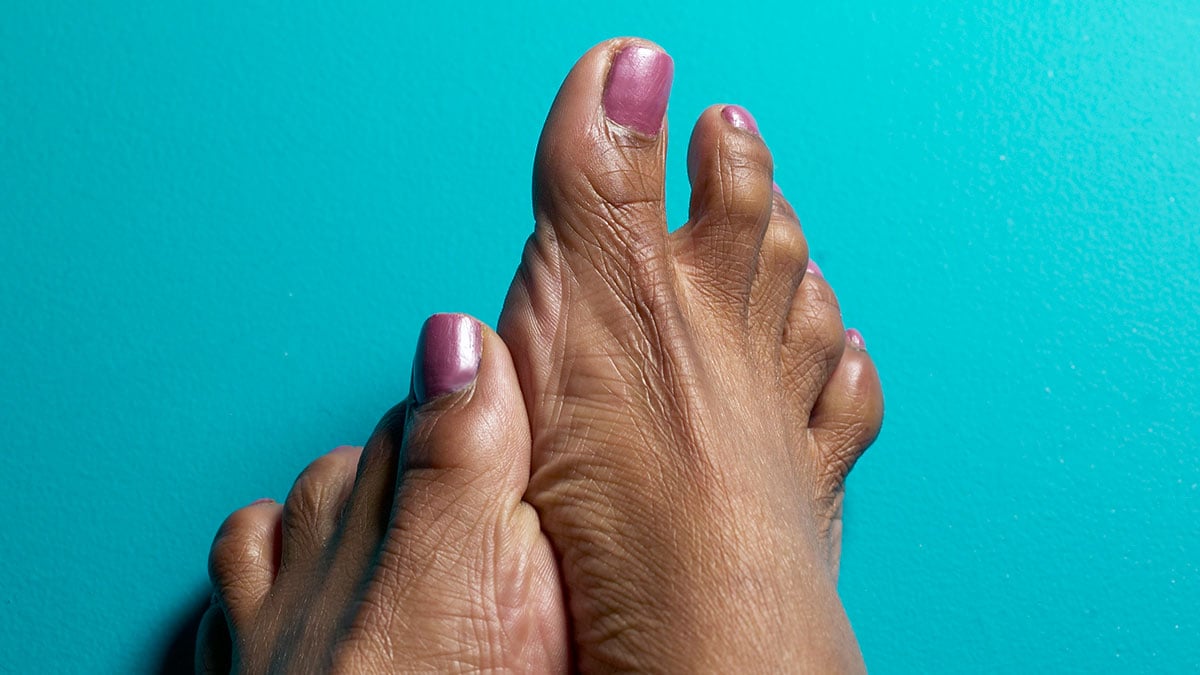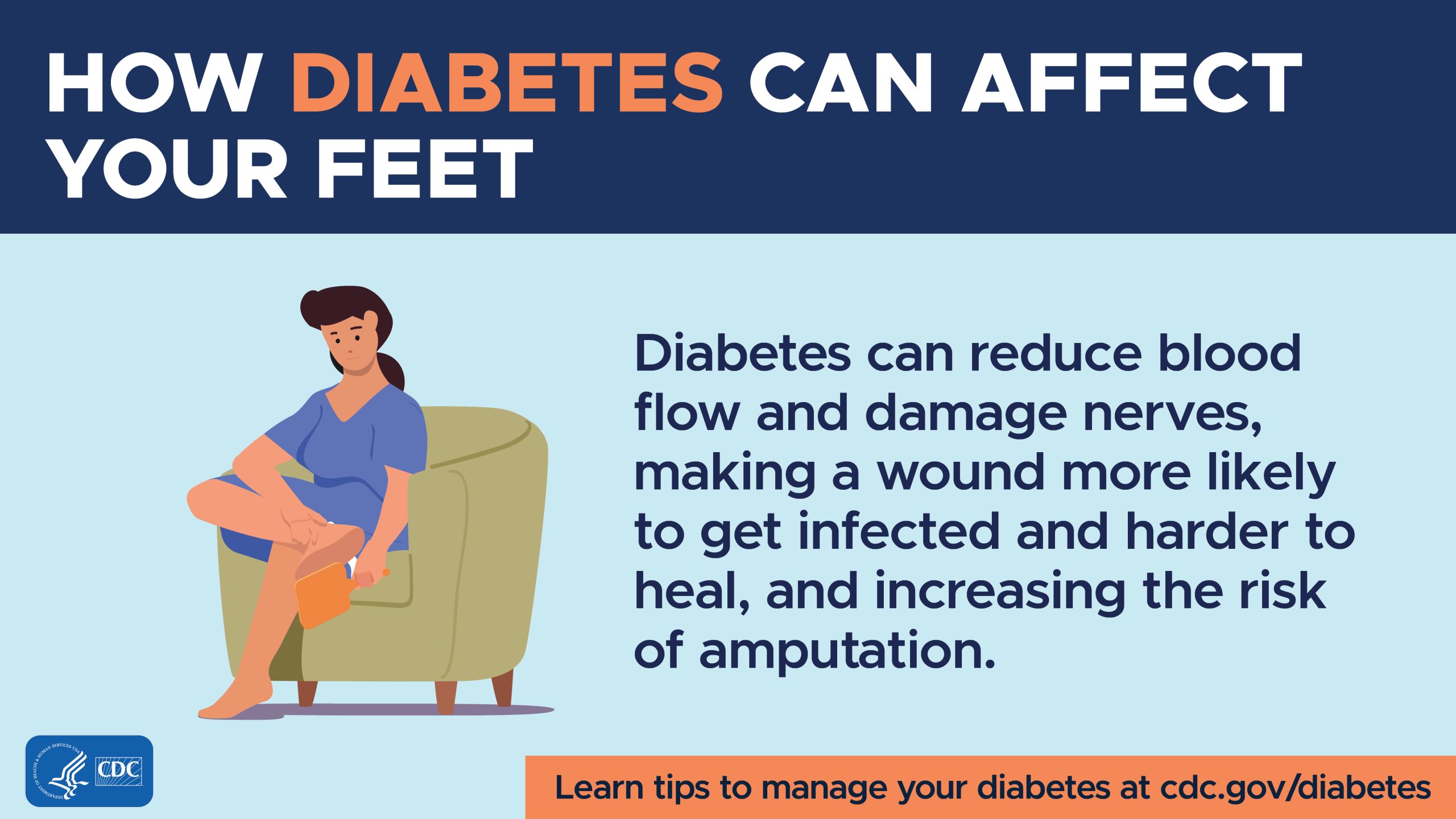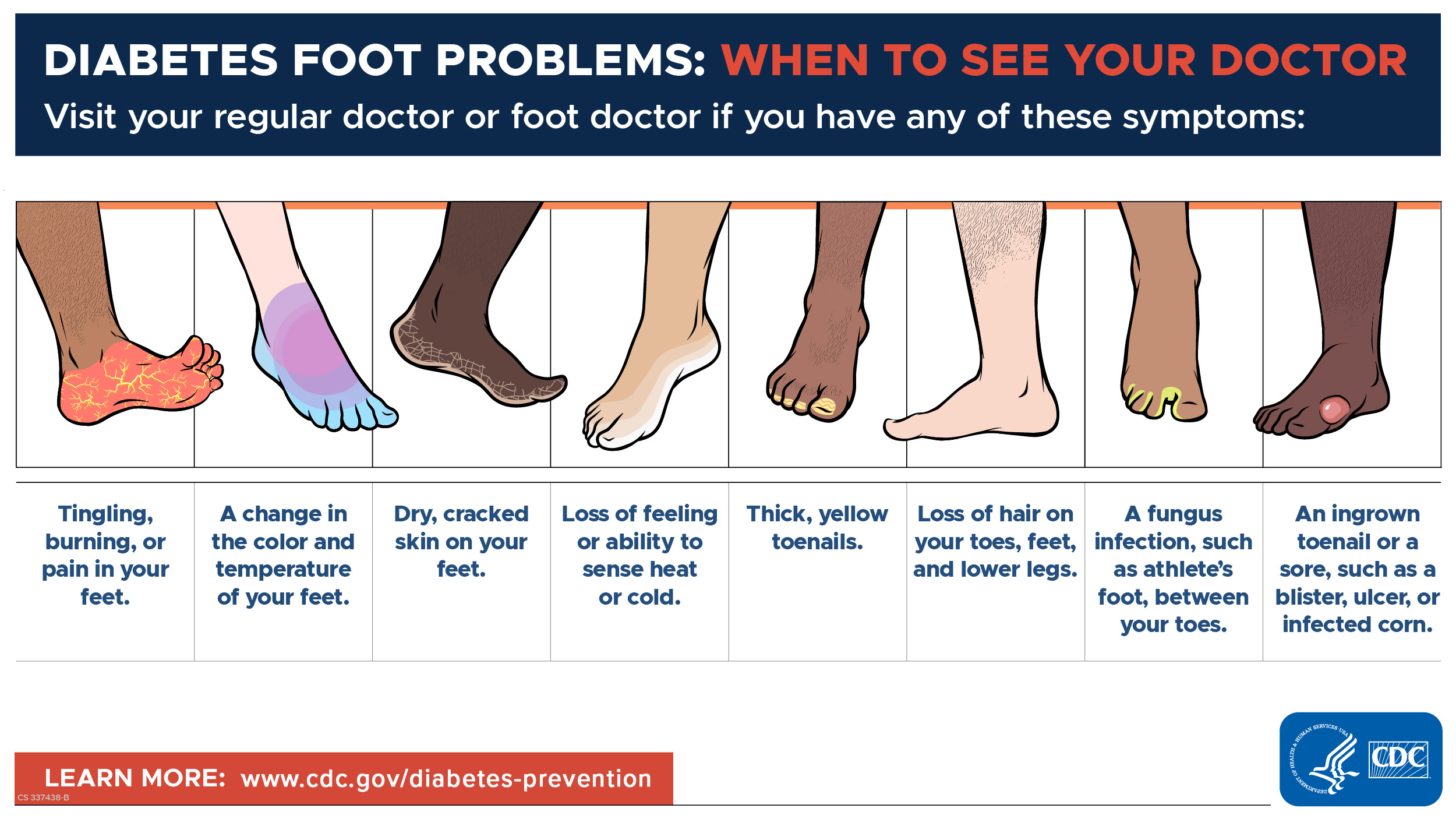Key points
- Nerve damage from diabetes puts you at risk for foot ulcers.
- Check your feet every day, even if they feel fine.
- That way you can catch problems early and get them treated right away.

Nerve damage
About half of all people with diabetes have some kind of nerve damage. Nerves in your feet and legs are most often affected. Nerve damage can cause you to lose feeling in your feet.
Some people with nerve damage have numbness, tingling, or pain. Others have no symptoms. Nerve damage can also lower your ability to feel pain, heat, or cold.
Pain is the body’s way of telling you something’s wrong so you can take care of yourself. If you don’t feel pain in your feet, you may not notice a cut, blister, sore, or other problem. Small problems can become serious if they aren’t treated early.
Could you have nerve damage?

Know the risks
Anyone with diabetes can develop nerve damage, but these factors increase your risk:
- Blood sugar levels that are hard to manage.
- Having diabetes for a long time, especially if your blood sugar is often higher than your target levels.
- Having overweight.
- Being older than 40 years.
- Having high blood pressure.
- Having high cholesterol.
Nerve damage and poor blood flow—another diabetes complication—put you at risk for developing a foot ulcer (a sore or wound). With diabetes, a foot ulcer could get infected and not heal well. If an infection doesn't get better with treatment, your toe, foot, or leg may need to be amputated (removed by surgery). This is done to prevent the infection from spreading and to save your life.
Check your feet daily
When you check your feet every day, you can catch problems early and get them treated right away. Early treatment greatly lowers your risk of amputation.
Prevent or delay nerve damage
Keep your blood sugar in your target range as much as possible. This is one of the most important things you can do to prevent nerve damage or stop it from getting worse. Other good diabetes management habits can help, too:
- Don't smoke. Smoking reduces blood flow to the feet.
- Follow a healthy eating plan.
- Get physically active—10 to 20 minutes a day is better than an hour once a week. And both are better than none!
- Take medicines as prescribed by your doctor.
Tips for healthy feet
Check your feet every day for cuts, redness, swelling, sores, blisters, corns, calluses, or other change to the skin or nails. Use a mirror if you can't see the bottom of your feet, or ask a family member to help.
Wash your feet every day in warm (not hot) water. Don't soak your feet. Dry your feet completely and apply lotion to the top and bottom. Don't put lotion between your toes; that could lead to infection.
Never go barefoot. Always wear shoes and socks or slippers, even inside, to avoid injury. Check that there aren't any pebbles or other objects inside your shoes. Make sure that the lining is smooth.
Wear shoes that fit well. For the best fit, try on new shoes at the end of the day when your feet tend to be largest. Break in your new shoes slowly. Wear them for an hour or two a day at first until they're completely comfortable. Always wear socks with your shoes.
Trim your toenails straight across and gently smooth any sharp edges with a nail file. Have your foot doctor (podiatrist) trim your toenails if you can't see or reach your feet.
Don't remove corns or calluses yourself. Also, don't use over-the-counter products to remove them. They could burn your skin.
Get your feet checked at every visit with your primary care provider. Also, visit your foot doctor every year (more often if you have nerve damage) for a complete exam. A complete exam will include checking for feeling and blood flow in your feet.
Keep the blood flowing. Put your feet up when you're sitting. Wiggle your toes for a few minutes several times throughout the day.
Choose feet-friendly activities like walking, riding a bike, or swimming. Check with your doctor about which activities are best for you and any you should avoid.
Be sure to ask your doctor what else you can do to keep your feet healthy.
When to see your doctor

If you have any of these symptoms, don't wait for your next appointment. See your regular doctor or foot doctor right away:
- Pain in your legs or cramping in your buttocks, thighs, or calves during physical activity.
- Tingling, burning, or pain in your feet.
- Loss of sense of touch or ability to feel heat or cold very well.
- A change in the shape of your feet over time.
- Loss of hair on your toes, feet, and lower legs.
- Dry, cracked skin on your feet.
- A change in the color and temperature of your feet.
- Thickened, yellow toenails.
- Fungus infections such as athlete's foot between your toes.
- A blister, sore, ulcer, infected corn, or ingrown toenail.
Most people with diabetes can prevent serious foot complications. Regular care at home and going to all doctor's appointments are your best bet. Doing both will help you prevent foot problems (and stop small problems from becoming serious ones).
